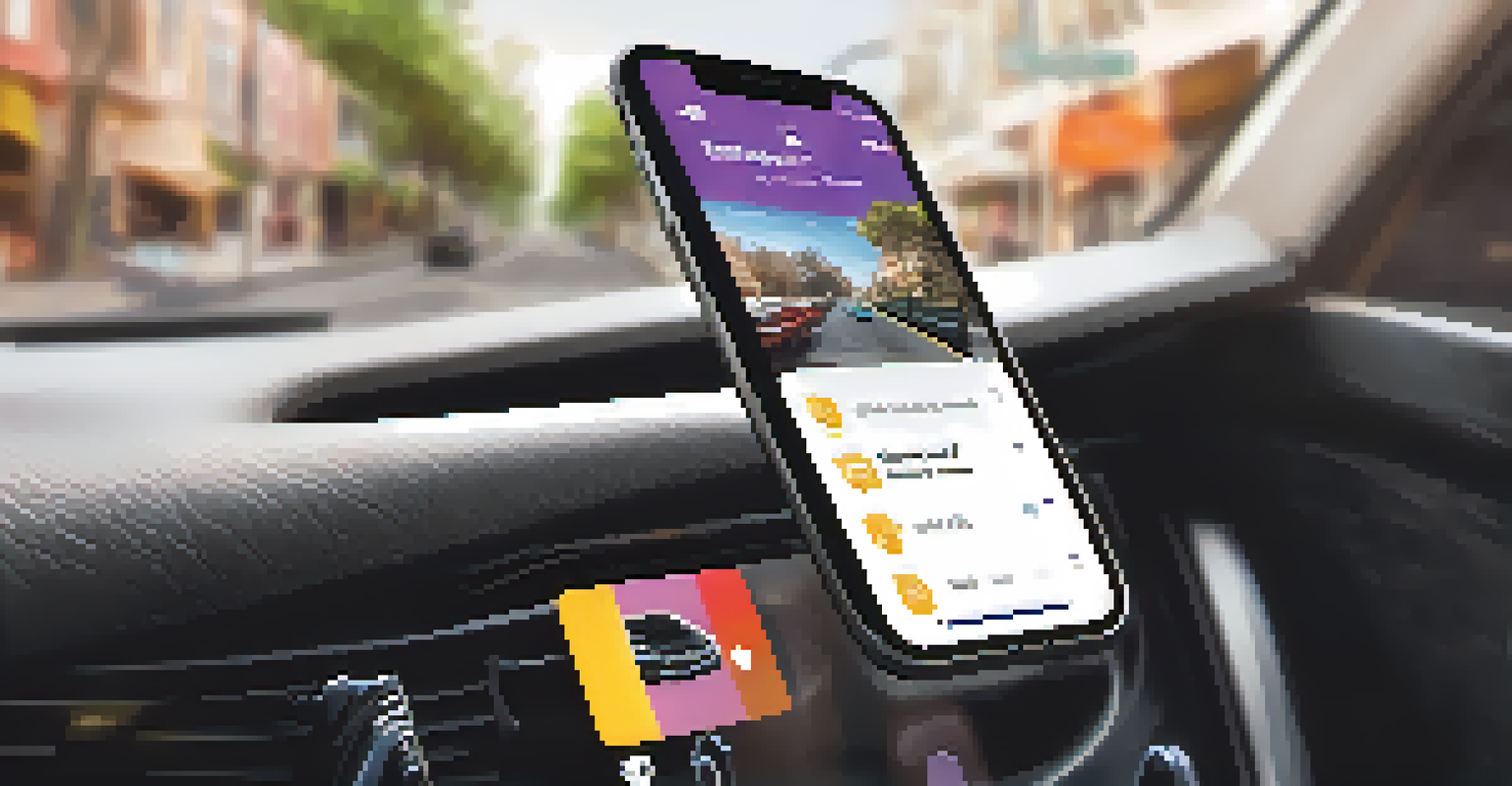Carpooling and Ridesharing Trends in New Jersey

Overview of Carpooling and Ridesharing in New Jersey
Carpooling and ridesharing have become increasingly popular in New Jersey, driven by the need for cost-effective and sustainable commuting options. With the state's heavy traffic and congestion, these services offer a practical solution for residents looking to save money and reduce their carbon footprint. Apps and platforms dedicated to connecting riders and drivers have made it easier than ever to find a carpool or rideshare partner.
The best way to predict the future is to create it.
In recent years, New Jersey has seen a surge in ridesharing services like Uber and Lyft, as well as carpooling initiatives facilitated by local governments. These programs not only help alleviate traffic but also promote a sense of community among commuters. Understanding the dynamics of these trends can provide valuable insights into how residents are adapting their travel habits.
As we delve deeper into the trends shaping carpooling and ridesharing in New Jersey, it’s essential to look at the factors driving this change. From environmental concerns to economic benefits, the motivations behind these choices are as varied as the commuters themselves.
The Rise of Ridesharing Apps
Ridesharing apps have revolutionized the way people commute in New Jersey. With just a few taps on a smartphone, users can quickly arrange a ride, making transportation more accessible than ever. This convenience has led to a significant uptick in the number of New Jersey residents using these services regularly.

One of the key factors contributing to the rise of ridesharing is the flexibility it offers compared to traditional public transportation. Commuters can choose their pickup and drop-off locations, which is especially beneficial for those living in areas with limited bus or train services. This flexibility is a game-changer in a state where commuting times can vary dramatically.
Carpooling Saves Money and Time
By sharing rides, New Jersey residents can significantly reduce commuting costs and alleviate traffic congestion.
Moreover, ridesharing apps often provide incentives for both drivers and riders, encouraging more people to participate. Promotions, discounts, and referral bonuses create a win-win situation, further solidifying the popularity of these platforms among New Jersey commuters.
Benefits of Carpooling for New Jersey Residents
Carpooling presents numerous advantages for New Jersey residents, particularly in terms of cost savings. By sharing a ride, commuters can split expenses like gas and tolls, making it a financially appealing option. For many, this alleviates the financial burden of daily commuting, especially in a state known for its high living costs.
Sustainability is no longer about doing less harm. It’s about doing more good.
In addition to saving money, carpooling helps reduce traffic congestion, which is a significant issue in New Jersey. Fewer cars on the road mean less gridlock, leading to shorter travel times for everyone. This collective effort not only benefits individual commuters but also contributes to a more efficient transportation network.
Another compelling reason to consider carpooling is the positive environmental impact. By reducing the number of vehicles on the road, carpooling lowers greenhouse gas emissions and contributes to cleaner air quality. This alignment with sustainability goals is a powerful motivator for many residents looking to make a difference.
Challenges Facing Carpooling and Ridesharing
Despite the many benefits, carpooling and ridesharing in New Jersey face several challenges. One major hurdle is the issue of trust among users. Many potential riders may hesitate to share a vehicle with strangers, raising concerns about safety and personal space. This apprehension can hinder the growth of these services, as fostering a sense of community and security is paramount.
Another challenge is coordinating schedules among carpool participants. Finding matching availability can be tricky, especially for those with fluctuating work hours. This complexity can deter potential carpoolers who might prefer the convenience of solo driving.
Ridesharing Apps Enhance Convenience
Smartphone apps have made it easier for commuters to find ridesharing options, providing flexibility and accessibility.
Finally, while ridesharing apps have made transportation more accessible, they also contribute to increased traffic congestion in some areas. The convenience of these services can lead to more cars on the road during peak hours, counteracting some of the initial goals of ridesharing. Addressing these challenges is essential for the sustainability of these transportation trends.
The Role of Local Government in Promoting Initiatives
Local governments in New Jersey are increasingly recognizing the importance of promoting carpooling and ridesharing initiatives. By implementing policies and programs that encourage these practices, they aim to alleviate traffic congestion and improve overall air quality. This proactive approach can create a more sustainable transportation ecosystem.
Governments have introduced various incentives, such as designated carpool lanes and subsidies for rideshare programs, to encourage participation. These initiatives not only help reduce the number of vehicles on the road but also support residents in making greener commuting choices. It's a collaborative effort that benefits all citizens.
Moreover, educational campaigns about the benefits of carpooling and ridesharing are essential. By raising awareness and providing information, local governments can empower residents to explore these options. When communities come together to support these initiatives, the positive impact on traffic and the environment becomes even more significant.
Future Trends in Carpooling and Ridesharing
As technology continues to evolve, the future of carpooling and ridesharing in New Jersey looks promising. Innovations such as autonomous vehicles and improved app functionalities could streamline the experience, making it even more user-friendly. These advancements may attract a broader audience to embrace ridesharing as a viable transportation option.
The integration of artificial intelligence in ridesharing apps can enhance matching algorithms, ensuring that riders find suitable carpools quickly. This increased efficiency can address current challenges, such as coordinating schedules and improving user trust. As these technologies develop, we can expect a more seamless ridesharing experience.
Local Governments Support Initiatives
New Jersey local governments are promoting carpooling and ridesharing through incentives and educational campaigns to improve traffic and air quality.
Moreover, as environmental awareness grows, more people may gravitate towards sustainable transportation options. With the rising cost of living and fuel, the financial aspect of carpooling will also remain appealing. As New Jersey continues to navigate these trends, we can anticipate a shift in commuting habits that prioritizes collaboration and sustainability.
How to Get Involved in Carpooling and Ridesharing
Getting involved in carpooling and ridesharing in New Jersey is easier than you might think. Start by downloading a ridesharing app or exploring local carpooling platforms that connect commuters in your area. These tools allow you to quickly find and coordinate with potential riders or drivers who share similar routes and schedules.
Additionally, consider reaching out to coworkers or neighbors to establish informal carpooling arrangements. Building a carpool group with familiar faces can enhance the experience, making it more comfortable and trustworthy. Communication is key; coordinate times and responsibilities to create a smoother process for everyone involved.

Lastly, don't forget to spread the word about the benefits of carpooling and ridesharing. The more people that participate, the larger the positive impact on traffic congestion and the environment. By sharing your experiences and encouraging others, you can help foster a community that values sustainable transportation options.